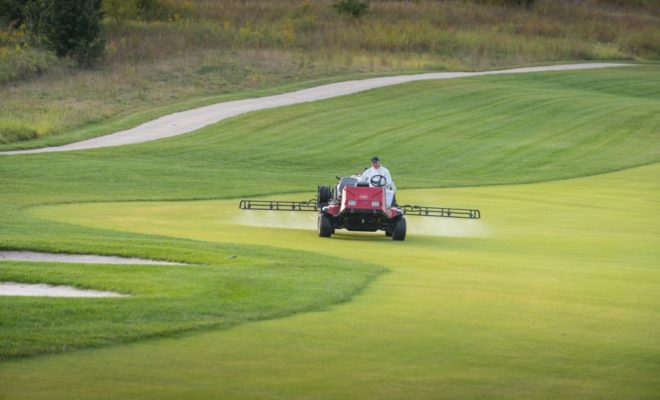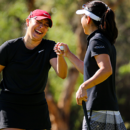Golf’s Wakeup Call: Facts Matter… Perceptions Matter More

The National Golf Foundation (NGF), the source for all the statistics that appear in this column, reports that more rounds of golf were played in 2021 than in any other year in American history, a neat trick given that there were fewer golf courses in 2021 than 2000.
The strongest growth was seen among youth (+22 percent vs. 2019), African Americans (+18 percent), women (+11 percent) and Latinos (+9 percent). In California, which also reported more rounds of golf in 2021 than in any previous year in history, the increases in youth and African American participation were roughly the same, while the number of women and Latinos was significantly higher.
Roughly 3.2 million people took up the sport for the first time in 2020 and 2021, the most ever over a two-year period, with 37 percent of them female and 31 percent persons of color. Given that California has less than half the number of golf courses per capita than the rest of the nation does, it’s no wonder that the biggest problem golfers have in this state is making a tee time if one is a public player, or finding a club without a waiting list if one is looking for a private club membership. And if you’re looking for a private club membership, brace yourself for the sticker shock you’ll get when you see the initiation fees and monthly dues.
Seventy percent of California’s golf courses are public, with 22.3 percent of them owned by government agencies (parkland golf courses). More than one-third of those who play golf in California have median incomes below the 50th percentile, a number that is much higher when one factors out those who belong to private clubs.
Those are the facts of golf in California.
But you wouldn’t know it from listening to the proponents of AB 1910 (Garcia; D-Bell Gardens) and reading their briefs in favor of what the SCGA has called the “Public Golf Endangerment Act” and that others are more generically calling the “Park and Open Space Endangerment Act.”
According to them, golf is in free fall. It’s an “elite” sport. Municipal golf courses are not parks, and when they are part of much larger park complexes, which is very often the case in the state’s urban areas, the portion that is golf is somehow not considered to be the same kind of active recreational activity as, say soccer or baseball or walking trails or equestrian centers or swimming pools or arboreta or any other specialized public amenity.
The California’s courts disagree with them on that last point (Save Mile Square Park Com. v. County of Orange [2001] 92 Cal. App. 4th 1142, 1148: “transformation of open-space, multi-use park to a public golf course upheld as a legitimate park purpose because golf was a recreational activity and the park would remain open to the public”), but why let such trifling matters as facts and California court decisions interfere with your personal opinion?
Yes, they are entitled to their opinion. They genuinely believe that golf and only golf — among the multiple active recreational activities that are part of California’s park/recreation community — would be better repurposed as residential development. But as the old saying goes, they’re not entitled to their own facts — nor their own law.
Whether opinion or fact, law or fiction, as much as you might be comforted that the facts and the law are sure to prevail, please think again. Laws change, and they are rarely if ever self-executing. Facts may be dispositive in science or engineering.
But when it comes to policy, politics and the public opinion that drive both, it’s perception that matters much more than facts, and the degree to which the false information predicating support for bills like AB 1910 finds support in the public arena is the degree to which an otherwise uninformed public finds that information plausible.
Whose fault is that? A game that never bothered to invest in advancing its own narrative, or a non-golfing public that only knows what it hears and reads? My answer: The former.
CHANGING WINDS
Golf had it so good from 1946-2005 that it took for granted that it would always have the benefit of such strong tailwinds. How good? During that 60-year run, a period that included deep recessions, wars, stagflations, inflations, natural disasters and the usual calamities of human existence, golf grew each and every one of those years. There were more golf courses on December 31 of each of those years than on January 1 — a record not matched by any other recreational activity — and many of them were built more to sell surrounding real estate than to meet golf demand. But the game grew so fast that increasing demand soon met the artificially created supply.
A bad case of a long overdue market correction is what the economists among us would suggest. And correct it did, beginning in 2005, a correction that was exacerbated a couple of years later by a “great recession” generated in large part by the same real estate sector that had long been oversupplying golf courses. Add it all up, and just as the stock market grows over time but often corrects and enters “bear” periods, golf entered its first real “bear” period in its long American run.
But golf became so unnerved by the shifting of its winds that it looked beyond the obvious economic/financial causes of its new headwinds and started to question the fundamental attractiveness of the game.
Never mind that the game was sufficiently attractive to appeal to countless generations over the course of 600 years. A game that appealed to multiple generations in multiple places was suddenly out of sorts with this generation — too long, too hard, too boring, too traditional, too staid, too stale. The game settled on a narrative that denigrated the very product it had to sell. Once the game settled on it, so did everyone else, including the media.
Don’t blame those who would repurpose what they think are underutilized, out-of-fashion golf courses for accepting and then using this toxic narrative for their own preferred ends. We did this to ourselves.
But what is done can be undone. It will take resolve, focus and organizational solidarity, to be sure. But it will also take the commitment of real resources. Changing hearts and minds always does.
But until the 90 percent of the population that doesn’t play golf drives by the golf courses in its neighborhoods and concludes that they bring the same value to those neighborhoods — and to the families in those neighborhoods and the environment in those neighborhoods — as the baseball diamonds, soccer fields, pickleball courts, tennis courts and hiking trails, golf will continue to win on the facts but risk losing in the court of public opinion. And that’s the court that always has the final say.
It’s pretty clear that the SCGA awakened to this reality long before this latest in a long line of wake-up calls, but one organization in one place in a nation as large as the United States won’t be enough to begin winning in the court of public opinion. To the rest: Whatever the outcome of AB 1910, don’t roll over and go back to sleep.











